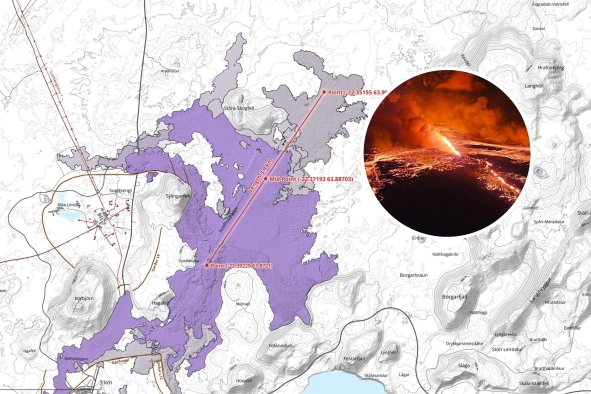Water reservoirs across the continental U.S. are experiencing more severe, prolonged and unpredictable periods of low water storage compared to several decades ago, a new study has revealed.
The issue is most pronounced in the western and central regions of the country, but reservoirs in the eastern and southeastern U.S. are also showing signs of vulnerability.
Published in Geophysical Research Letters, the study offers insights into the current state of U.S. reservoirs, which are becoming increasingly important as natural water sources like groundwater reserves, snowpack and rivers become less reliable.
"We know that reservoirs are changing, and that reservoirs were designed for historical water conditions. So now there's uncertainty about how, or whether, reservoirs will be able to adapt," Caelan Simeone, a hydrologist at the U.S. Geological Survey's Oregon Water Science Center who led the study, said in a statement.
The findings are expected to aid water managers at all levels in making more informed decisions regarding water release and storage, potentially improving water forecasting efforts.
Reservoirs serve a critical role in mitigating the effects of drought by controlling water flow to downstream areas.
However, disruptions in their operation can lead to widespread water availability issues, as demonstrated by the historically low water levels in Lakes Mead and Powell between 2000 and 2021.
That period, marked as the driest 22 years in 1,200 years, according to research published in Nature Climate Change, triggered extensive water-use restrictions across the southwestern United States.
The study examined water levels in 250 large reservoirs from 1981 to 2020. The research aimed to identify patterns in baseline, maximum and minimum water levels and understand how these levels correlate with management practices and climate conditions.
Results showed that reservoirs in the arid western and central U.S. experienced more severe and variable periods of low storage, a trend partially expected due to the natural variability in annual runoff and drought conditions in these regions.
"The declining levels in our major reservoirs in the West create water supply problems for cities and farmers," Robert Glennon, a water policy and law expert and an emeritus professor at the University of Arizona who was not involved in the study, told Newsweek.
"The reservoirs traditionally offered a buffer to offset years of low rain and snow. But our western reservoirs are located in canyons that are V-shaped, or martini glass-shaped. The lower the surface levels go, the quicker they will fall.
"At some point, the levels drop so low that the dams can't generate hydropower. And eventually the reservoirs hit "dead pool," which means no water gets released from the dams."
But it isn't just western and central reservoirs at risk. The study also found significant drops in the maximum storage levels of reservoirs in wetter regions like the Southeast and Pacific Northwest. Out of the 250 reservoirs analyzed, 169 exhibited declining maximum storage, with 89 showing significant reductions.
"The reduction of maximum annual storage was widespread, which really surprised us," Simeone said.
"Many reservoirs just aren't filling to the levels they once did. Overall, we're getting this picture of declining maximum water levels across the United States."
The study suggests that increased sediment buildup and changing hydroclimatic conditions are likely contributing to these observed declines and the increased variability in water storage.
These findings pose a challenge for reservoir managers, who must now adapt to conditions that are far different from those anticipated when most of these reservoirs were constructed between 1930 and 1970.
"There was an assumption that conditions would be more or less stationary," Simeone noted. "Climate change interrupted that. Now, managers need to try to mitigate the hydrologic shifts we're seeing."
Do you have a tip on a science story that Newsweek should be covering? Do you have a question about water storage? Let us know via science@newsweek.com.
References
Simeone, C. E., Hammond, J. C., Archfield, S. A., Broman, D., Condon, L. E., Eldardiry, H., Olson, C. G., & Steyaert, J. C. (2024). Declining Reservoir Reliability and Increasing Reservoir Vulnerability: Long-Term Observations Reveal Longer and More Severe Periods of Low Reservoir Storage for Major United States Reservoirs. Geophysical Research Letters, 51(16). https://doi.org/10.1029/2024GL109476
Williams, A. P., Cook, B. I., & Smerdon, J. E. (2022). Rapid intensification of the emerging southwestern North American megadrought in 2020–2021. Nature Climate Change, 12(3), 232–234. https://doi.org/10.1038/s41558-022-01290-z
Disclaimer: The copyright of this article belongs to the original author. Reposting this article is solely for the purpose of information dissemination and does not constitute any investment advice. If there is any infringement, please contact us immediately. We will make corrections or deletions as necessary. Thank you.



